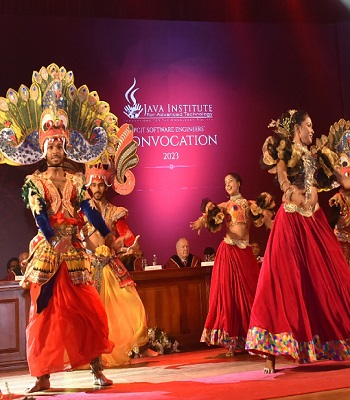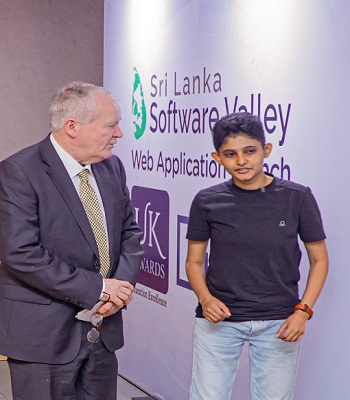Taekwondo at the Java Institute for Advanced Technology
Taekwondo is a standout amongst the most efficient and exploratory Korean conventional combative techniques, and it comprises more than physical battling abilities. It is a control that shows methods for improving our soul and life through the preparation of our body and psyche. Today, it has transformed into a worldwide game that has picked up a global notoriety and is one of the official amusements in the Olympics. Taking a closer look at the meaning of the words "Tae" "Kwon" and "Do" reveals that it is composed of three parts as shown in the English spelling, even though it is a single word in Korean. "Tae" means "foot," "leg," or "to step on"; "Kwon" means "fist," or "fight"; and "Do" means the "way" or "discipline." If we put these three parts together, we can see two important concepts behind "Tae Kwon Do". To begin with, Taekwondo is the correct method for utilising Tae and Kwon clenched hands and feet,' or every part of the body that are spoken to by clenched hands and feet. Second, it is an approach to control or quiet down battles and keep the peace. This idea originates from the significance of Tae Kwon 'to put clenched hands under control' [or 'to venture on fists']. In this manner, Taekwondo signifies "the correct method for utilising all parts of the body to stop battles and manufacture a superior and more tranquil world." Taekwondo has been creating with the 5000 year long history of Korea, being called by a few unique names during this duration. In Korea, Taekwondo started as a resistance military craftsmanship called "Subak" or "Taekkyon," and was created as a method for preparing body and brain in the old kingdom of Koguryo, under the name of "Sunbae." In the Shilla period, it had turned into the foundation of Hwarangdo that went on to deliver pioneers of the nation. At present, Taekwondo can be described as the combative technique in other Oriental nations and imparts a few components to these nations, on the grounds that over the span of its development it has birthed a wide range of styles that existed in hand to hand fighting in the nations encompassing Korea, similar to Japan and China. Be that as it may, Taekwondo is altogether different from numerous similar oriental hand to hand fighting. In the first place, physically it is exceptionally rapid with dynamic developments that incorporate a hallucination of foot aptitudes. Second, the rule physical developments are in simpatico with that of the brain and life in general. Third, it has dynamic postures from another point of view. Taekwondo can be portrayed by solidarity: the solidarity of body, psyche, and life, and the solidarity of the posture ["poomsae"] and encounter, and splitting down. When you engage in Taekwondo, you ought to make your psyche serene and synchronise your brain with your developments, and extend this concordance to your life and society. This is the way by which Taekwondo provides a guideline for physical developments, the rule of psyche preparing, and the standard of life get to be one and the same. Then again, the privilege poomsae leads to the right encounter, which will in the long run produce extraordinary ruinous force. Why do we achieve such a solidarity in Taekwondo? Taekwondo is a lifestyle, much like having a vocation, raising a family, battling for a cause, or any of various raison d'etre. What makes Taekwondo not quite the same as these is that it is an action for survival to a great degree in opposing circumstances. One should dependably conquer the foe that is attempting to bring about mischief. In any case, just winning a battle is insufficient to ensure one's wellbeing, in light of the fact that the adversary may recover and assault once more. Also, there might be numerous different adversaries than the one that was simply crushed. One cannot ever feel safe unless one increases perpetual peace. To accomplish this changeless or enduring peace, one needs solidarity. This is the aspect that Taekwondo focuses on. Generally, Taekwondo would be the same as other road battling aptitudes. Taekwondo seeks after concordant development and changes of life through its one of a kind exercises. This is the reason one could say Taekwondo is a lifestyle. To at last empower ourselves to lead more important lives, we would do well by finding the controlling standards profoundly covered up in Taekwondo.
The Trainer : The trainer of Taekwondo at the Java Institute for Advanced Technology is Mr. Mahil Asitha Wickramatunga, a highly proficient and accomplished Taekwondo trainer, instructor, referee, and player. Each and every member of the Taekwondo Club of the Institute can accurately, professionally, and skilfully learn the highly disciplined martial art within the relevant environment under the guidance of Mr. Wickramatunga. At present, the current Taekwondo grade of Mr. Mahil Asitha Wickramatunga is 4th Dan Black Belt [Kukkiwon] Korea [No. 05233788]. Additionally, Mr. Wickramatunga is a National Referee and acts as the Vice President of the Gampaha District TKD Federation (2016). Moreover, Mr. Wickramatunga an officially registered School Instructor for Taekwondo. Mr. Mahil Asitha Wickramatunga has achieved a number of other academic and professional qualification in addition to his brilliant prowess in the field of Taekwondo. These qualifications include a Master of Science degree as well as official professional qualifications from Sri Lanka.





